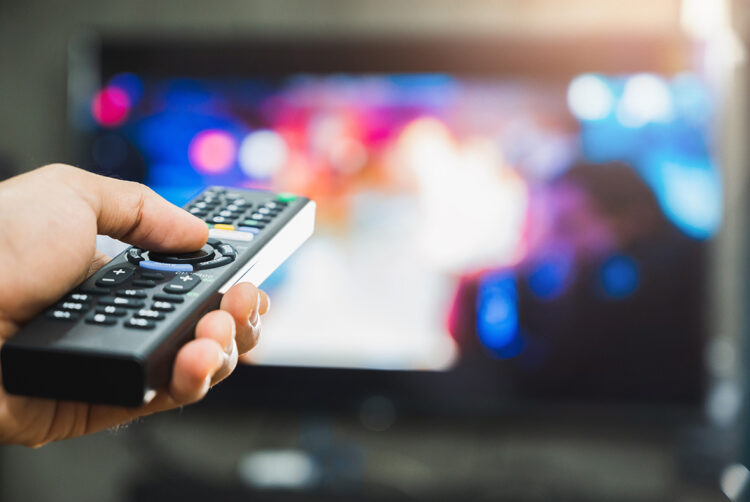Opinion
Everything in digital can be measured and this abundance of measurement gives marketers a feeling of control. But we have forgotten the basics of marketing that still apply today.
The Future of TV Advertising Global event has been over for more than a month, but still the talk from Peter Field sticks with me.
Marketing, and media in particular, has moved into short-term thinking over recent years. Everything in digital can be measured and this abundance of measurement gives digital marketers a feeling of control. But it seems we have forgotten the basics that still apply today.
The digital metrics that are being measured are often metrics for the sake of it. They rarely get questioned. Think about viewability definitions of a video on Facebook: it is counted as a view when it was “viewed” for at least three seconds. Or think about a click. Just because someone does not click on your ad does not mean that they won’t buy your product.
Some digital platforms offer return on investment (ROI) reports. But these ROIs are short-term, based on one campaign, calculated in isolation on that platform.
There is no basic marketing understanding that brands need to build up memory structures in people’s minds. And this often happens over time, when they are not in the market and, most importantly, they happen subconsciously.
So if marketers know and also have research from the likes of Field, Byron Sharp or Karen Nelson-Field at hand, why do we keep focusing on digital platforms and reducing broadcast media spend significantly or even cancelling these channels from the plan altogether?
Building a brand
What radio, TV, print and OOH have in common is that they reach a large chunk of the people who are part of your potential buyers, quickly and at scale.
Whether it’s for low-value products or high-value items, to get people to consider your brand, one crucial way is to get into their so-called relevant set. Do they favour your brand over others? Would they consider it when coming into market? At that point, the other three Ps of the marketing mix (product, place, price) play a more key role than the other P: promotion.
But up to that point, brands can invest in themselves via communication. And the most effective channels are the ones that allow the building up of memory structures.
According to Field and Nelson-Field, an ad needs to have at least 2.5 seconds to get the chance to build memory structures. The longer the ad, the better. A 30-second spot works much harder to get into the memory structure than a three-second view.
Armed with that insight, think about which channels can play an ad for that long.
The next step is to think about the media consumption experience of the people you want to reach. Is an ad break accepted or will it be perceived as disruptive? Again, broadcast channels have the highest acceptance and trust, meaning it’s favourable for advertisers to place their ads in these environments.
Thirdly, broadcast channels offer the space your ad needs to be noticed. A big screen, a large OOH site, one to two pages in print. Audio ads, despite not having a visual element, perform very well in building memory structures too. There is no disruption and audio ads play in full; rarely does an audio channel get switched off because of an ad break.
Fleeting experience
Most digital channels cannot match this. Consumption is often fleeting, the screens tend to be small and digital ads are mainly perceived as invasive. Even if they have their role in addressing people when they are actively looking for a product in your relevant segment.
Connected TV is a different story, as long as the ads are non-skippable, but the reach is not there yet due to fragmentation.
And to round it off, media plays just one part in the effectiveness of advertising. The creative that media carries is just as crucial. But the message needs to have a chance to be noticed or recognised.
Broadcast channels are crucial in building up the reach that allows for memory structures to be built. In addition, these channels have gone — or are still going — digital, meaning they still offer the advantages listed above, but they have become more accessible for brands with smaller budgets.
It takes some patience to see the effects, but don’t trust digital media to keep growing your brand just because you get a shiny dashboard that allows you to track lots of short-term metrics.
 Nina Franck is an independent paid media strategy consultant and director of client success at All Eyes on Screens (formerly AdScanner).
Nina Franck is an independent paid media strategy consultant and director of client success at All Eyes on Screens (formerly AdScanner).
Strategy Leaders: The Media Leader‘s weekly bulletin with thought leadership, news and analysis dedicated to excellence in commercial media strategy.
Sign up for free to ensure you stay up to date every Thursday.
Adwanted UK is the trusted delivery partner for three essential services which deliver accountability, standardisation, and audience data for the out-of-home industry.
Playout is Outsmart’s new system to centralise and standardise playout reporting data across all outdoor media owners in the UK.
SPACE is the industry’s comprehensive inventory database delivered through a collaboration between IPAO and Outsmart.
The RouteAPI is a SaaS solution which delivers the ooh industry’s audience data quickly and simply into clients’ systems.
Contact us for more information on SPACE, J-ET, Audiotrack or our data engines.





 Nina Franck is an independent paid media strategy consultant and director of client success at All Eyes on Screens (formerly AdScanner).
Nina Franck is an independent paid media strategy consultant and director of client success at All Eyes on Screens (formerly AdScanner).